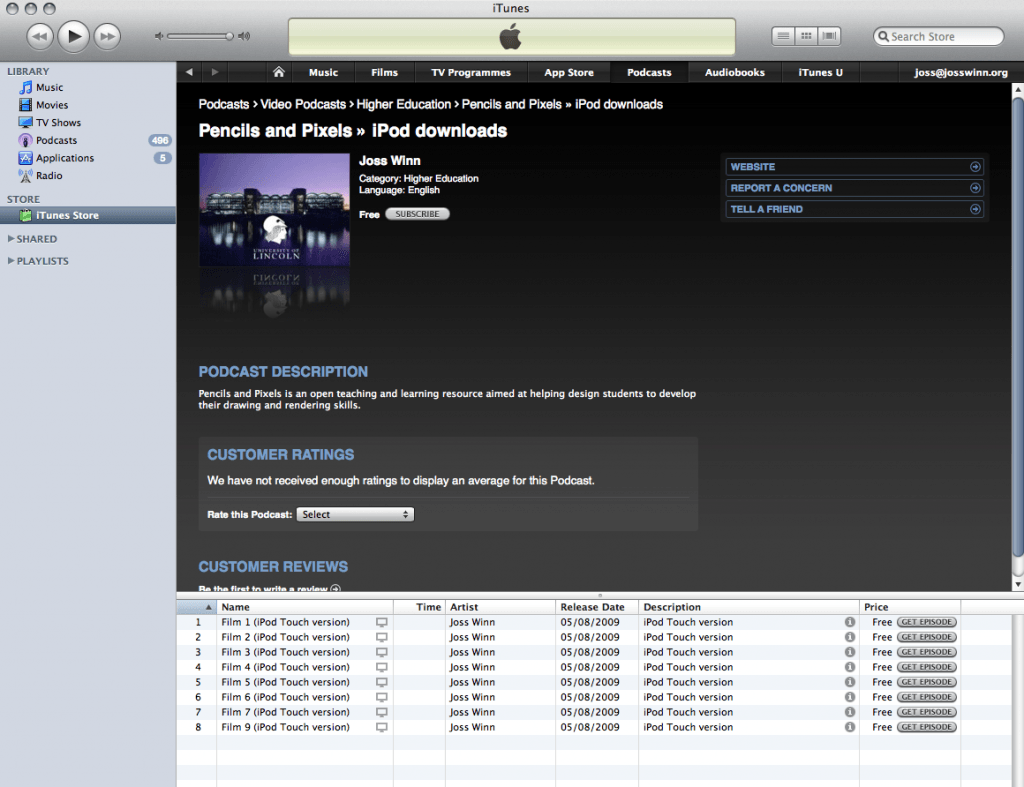One of the conclusions I’ve come to over the course of the ChemistryFM project is that sharing doesn’t need institutionalising. I don’t think we need to develop policy and processes for sharing the work we do. I’ve been drafting the final report for the ChemistryFM project this week and have written that “the overall approach taken throughout the project was to not treat it as a project.” Basically, despite being Project Manager, I’ve just let the teachers and students get on with the work we said we’d do and prompted them simply to remind them of obligations we have to finishing the project on time.
The idea of formalising the process of sharing teaching and learning materials is something I’ve found myself increasingly resisting throughout the project. Academics don’t need more constraints on their working practices, they need less. They need more freedom to share and a hand in doing so when they’re hesitant about how best to share their work; they need support when they’re unclear about how to license their resources.
I’ve been reminded of a paper by David Noble where he argues that universities are responsible for “the systematic conversion of intellectual activity into intellectual capital and, hence, intellectual property.” He goes on to bemoan
the commoditization of the educational function of the university, transforming courses into courseware, the activity of instruction itself into commercially viable proprietary products that can be owned and bought and sold in the market. In the first phase the universities became the site of production and sale of patents and exclusive licenses. In the second, they are becoming the site of production of — as well as the chief market for — copyrighted videos, courseware, CD–ROMs, and Web sites.
Of course, the OER movement is in part a reaction to this very commoditisation of education and an effort to counter the transformation of courses into commercial courseware.
I worry though that by institutionalising OERs, we’re producing constraints that go against sharing. Scaling up the production of OERs to an institutional level where sharing is considered in terms of an IP Policy, business case, marketing and ‘best practice’ will kill the potential that already exists to share. We have the Internet, we have the licenses, we have an abundance of resources to share. We don’t even need to measure success in terms of resources shared. Rather, we should be measuring the success of the OER movement by our willingness to resist the systematic conversion of intellectual activity into intellectual capital. To justify OERs in terms of a business case is just another way of creating capital out of immaterial labour.
In terms of our contribution to the academic commons we’ve already argued that the teacher-student relationship needs to be defined by an alternative organising principle where the student is a co-producer in the construction of mass intellectuality.
this requires academics and students to do more than simply redesign their curricula, but go further and redesign the organizing principle, (i.e. private property and wage labour), through which academic knowledge is currently being produced… creating a teaching, learning and research environment which promotes the values of openness and creativity, engenders equity among academics and students and thereby offers an opportunity to reconstruct the student as producer and academic as collaborator. In an environment where knowledge is free, the roles of the educator and the institution necessarily change. The educator is no longer a delivery vehicle and the institution becomes a landscape for the production and construction of a mass intellect in commons.
When there’s equity between teacher and student, then sharing will come naturally, it will be unstoppable and grow exponentially. When teaching and learning materials are evaluated, packaged, branded, standardised and archived, they’re turned into learning objects consumed by objectified ‘learners’. That is, if they ever get as far as becoming learning objects as each step in their production is another barrier to sharing.
Scott Leslie has got it right when he says, “if you want to share, you will”. If we help create a desire, (a compulsion is what I feel), to share in both teacher and student academics, then any existing barriers will be irrelevant. We do that, not by institutionalising sharing, but by showing the humanity in sharing; the joy of giving and receiving; the immaterial wealth of knowledge that already exists and the pleasure of creating social relations that resist the organising principle of private property and wage labour.
I’m currently reading Do It Yourself. A handbook for changing our world. It’s basically a book about taking direct action. There’s a section in there on ‘popular education‘, which I think the current debate around the institutionalisation of OERs, as clearly seen from the comments and pingbacks on Scott’s post, could learn from. It’s written by the Trapese Collective, and walks through the key aspects of popular education:
- A commitment to transformation and solidarity
- Learning our own histories and not his-story
- Starting from daily reality
- Learning together as equals
- Getting out of the classroom
- Inspiring social change
There’s no emphasis on technology or networks or even the conscious act of sharing. The emphasis is on grounding education in the reality of our social relations, the struggle of daily life, the hierarchical relations between institutions and people, and between academics and students. The desire for autonomy is also a desire to re-instate the commons, to break the enclosures that currently inhibit sharing. The conscious act of sharing is both a move to resist oppression and a drive towards autonomy. After all, we share our work in education so that one-day we might become free through education, don’t we?
The title of this post is ‘towards a manifesto for sharing’. If we were to write such a manifesto, what would it contain? Feel free to start writing it in the comment box below. Thanks.



